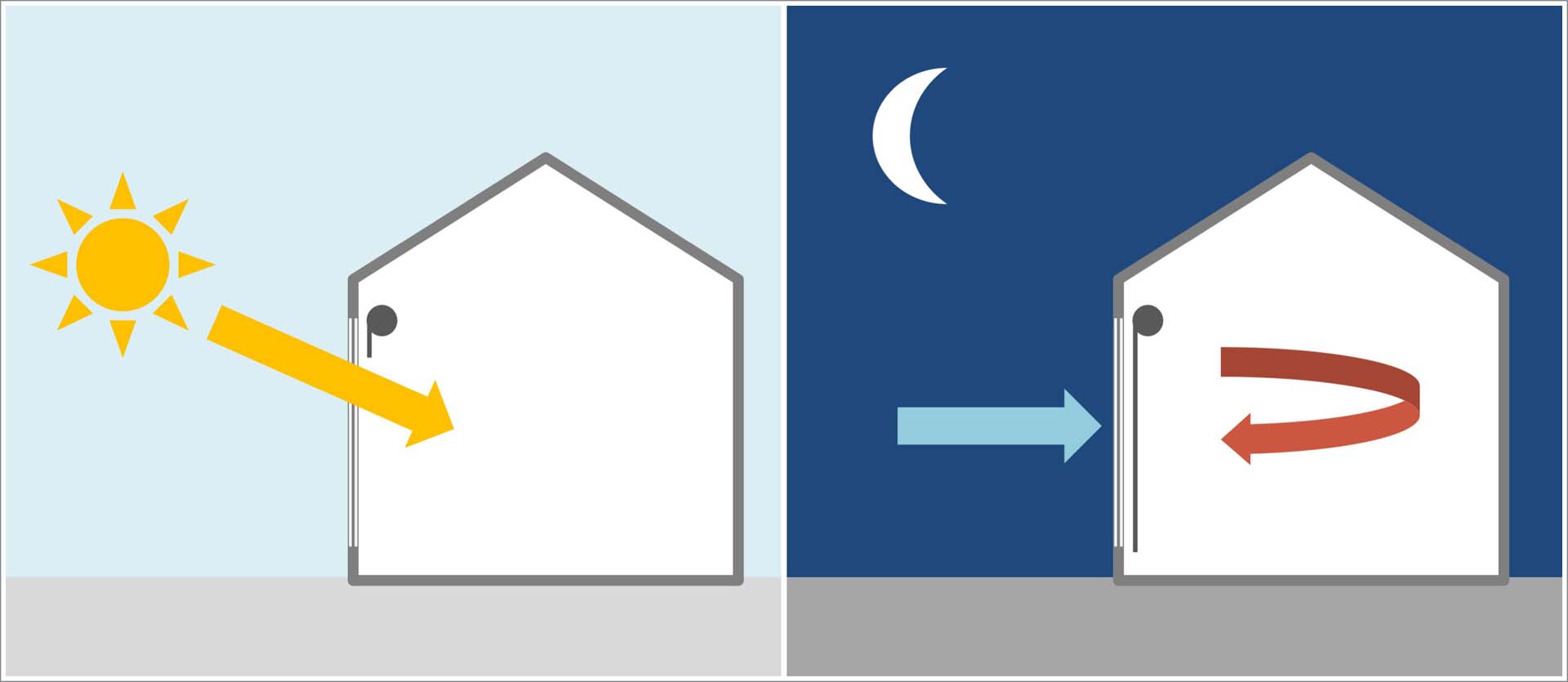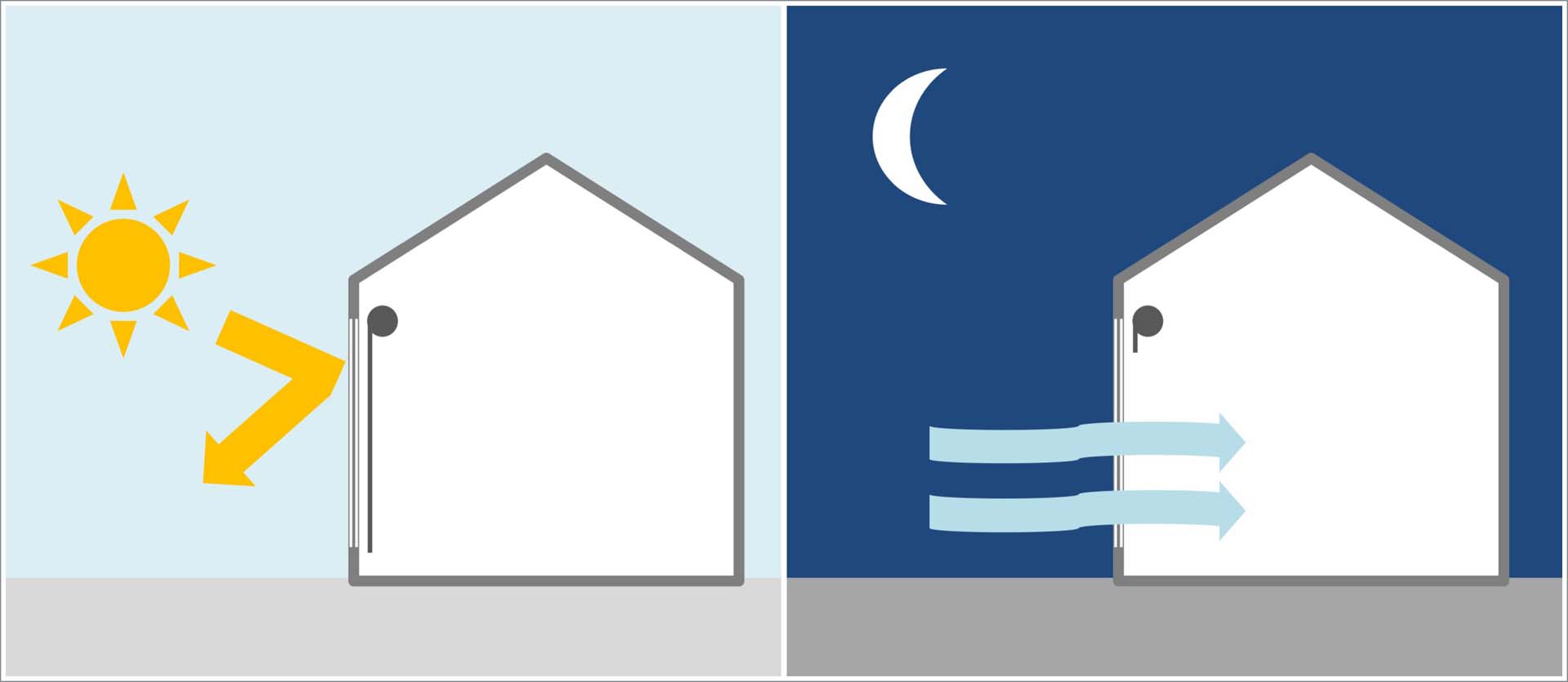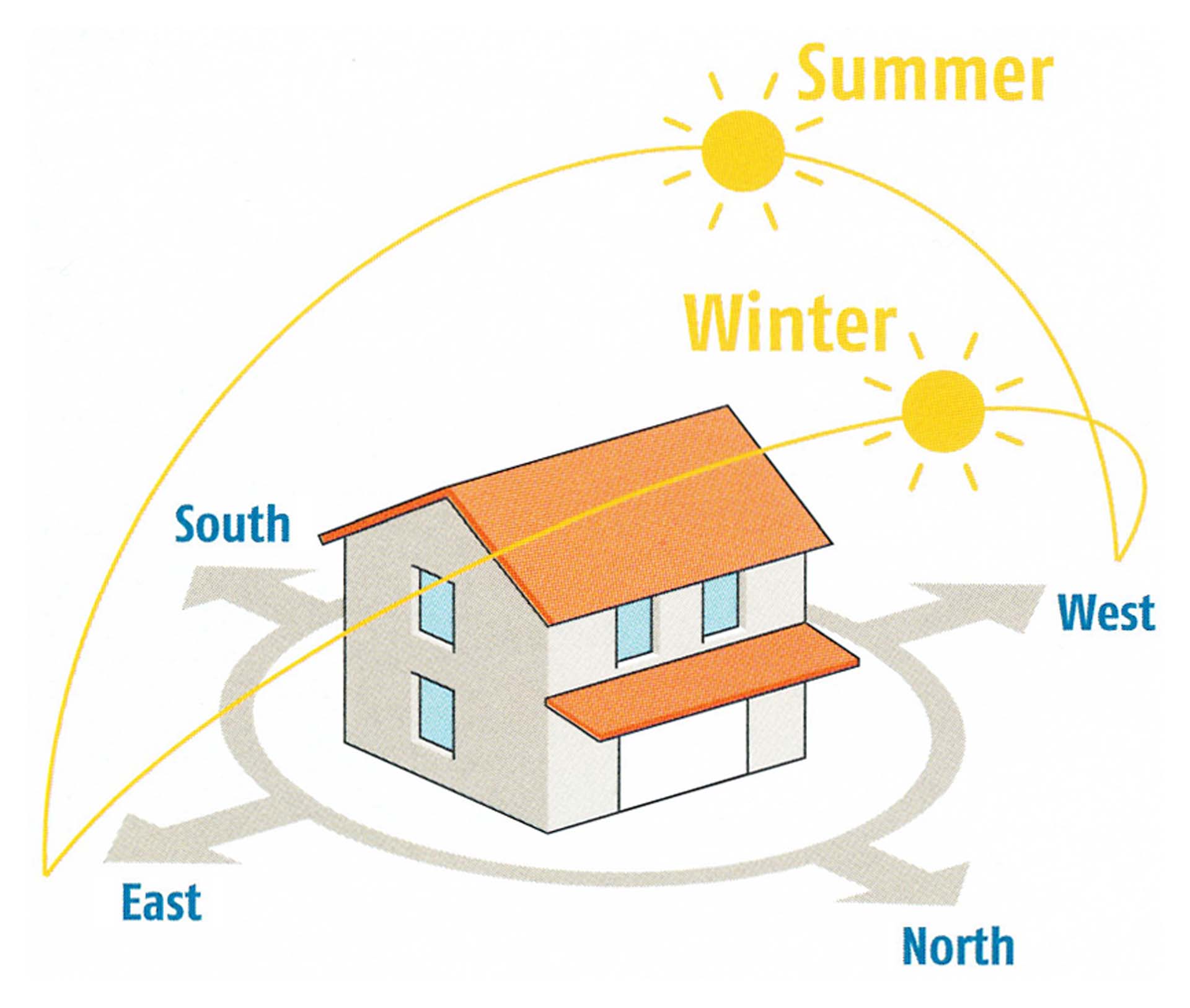- Choose an economical heating and cooling system
To meet your needs for comfort whilst saving on energy, consider modern heating and cooling technologies with sensors and timers and focus on renewable energy sources. In tropical and sub-tropical regions, natural and mechanical ventilation can be very cost-effective provided excessive, hot outside air is not introduced.
- Use the right type of insulation
It is essential to insulate ceilings and walls and track down thermal bridges and air-leakage. The precise choice of insulation methods depends on your climate zone. Check the National Construction Code and the relevant maps for the level of insulation required in your area.
- Remember that vegetation can help protect from the sun
Deciduous trees allow sunlight through in winter and provide significant protection against the sun’s heat in summer. In many parts of Australia, planting evergreen trees to the north-west and south of the house creates an effective barrier against cold winds in winter, but ensure large trees are planted at a safe distance from any building.
- Choose energy efficient window coverings and outdoor shades
In summer, shading from the sun is just as important as insulation is in winter. In order to be effective in summer, window coverings must reduce the amount of heat that enters the room whilst maintaining sufficient levels of natural light during the day. In winter, the opposite is true; on sunlit windows keep blinds and shutters open during the day to benefit from the sun, and keep them closed at night to keep the heat inside.
WincovER energy ratings measures the thermal performance of window coverings and shades. The WincovER star rating system makes it easy to compare between different types. Every rated product has a star rating for winter and another one for summer. The higher the number of stars, the better the performance of that product. The WincovER Certified Products Hub displays all currently rated window coverings and outdoor shades.
When purchasing a WincovER rated product, ask the retailer for your WincovER Certificate which contains the WincovER rating details of the product you purchased. Do keep a copy of your WincovER certificate in a safe place for future reference.
Window coverings are fitted on the inside of a window and include a large choice of styles, materials, colours and textures. These include indoor roller blinds, venetian blinds, pleated blinds, cellular shades and roman blinds as well as louvred shutters. It is important to note that the outside facing colour of the material used determines its thermal properties. Darker colours exposed to sunlight will absorb the sun’s rays and re-radiate this heat into the room. Lighter colours will reflect sunlight and help keep room temperatures down in summer.
To make the window covering more energy efficient, use a pelmet box fitted to the architrave at the top of the window. The pelmet box will help reduce the transfer of heat through the window. It is also recommended to fit window coverings within the reveal of the window, as this enhances their insulating properties.
Outdoor shades are available in fixed and adjustable designs. Fixed designs include metal louvres mounted onto fixed frames, with fixed or adjustable blades. Fixed louvres should maximise winter sun whilst providing full shade in summer. Adjustable louvres allow the homeowner to more precisely control the amount of heat and light entering a room.
Outdoor shades also include retractable fabric awnings and outdoor blinds with a wide range of products on offer. Outdoor shades are very effective at reducing the amount of sun reaching the window. Roller shutters and folding or sliding louvred shutters made of metal or custom-wood are fitted to the outside of windows. They can be positioned to block out the sun and are effective at helping keep a room’s temperature down in summer. In warmer climates, always consider lighter coloured products for their reflective properties.
Automation helps maximise the efficiency of blinds, awnings, shutters and louvres. Timer operated window coverings and sun shades are set to open and close according to a pre-established schedule which is adjusted for winter and summer. Sensor automation is triggered by environmental conditions, namely air temperature, to automatically open and close the blinds, awnings, shutters or louvres so as to keep the indoor temperature at a comfortable, pre-set level.
Please consult with your WincovER Accredited Retailer for the window covering or outdoor shade that will best suit your needs.





